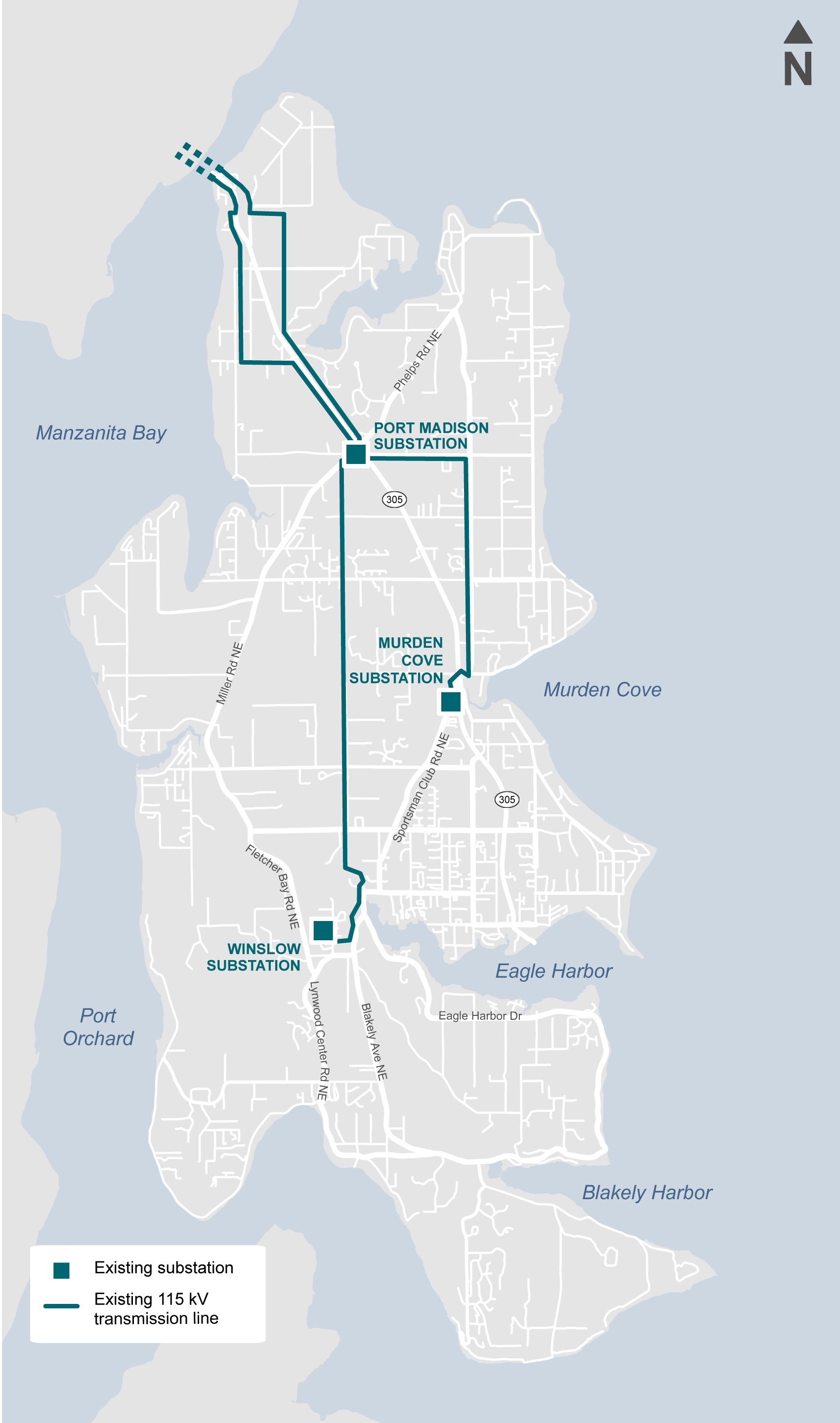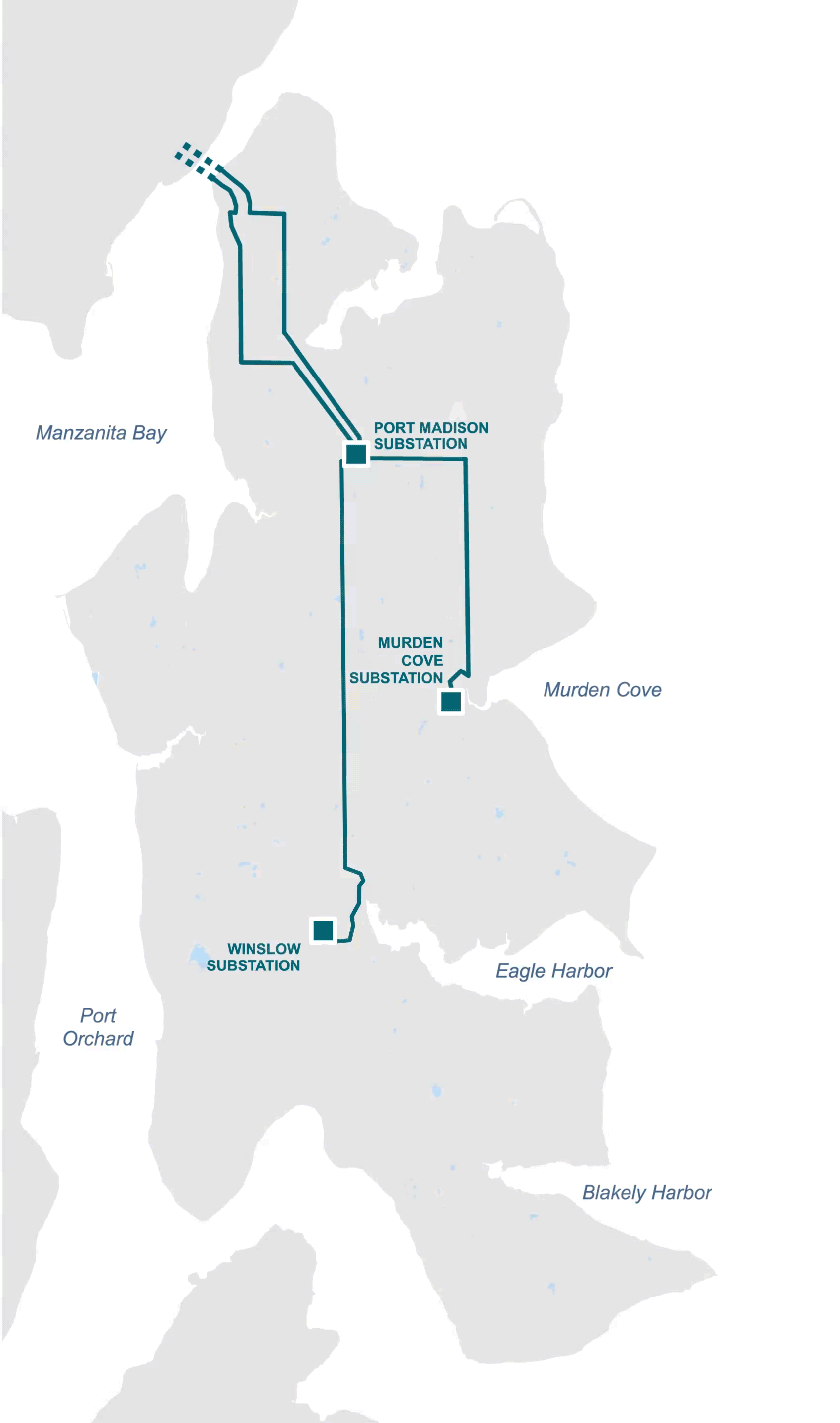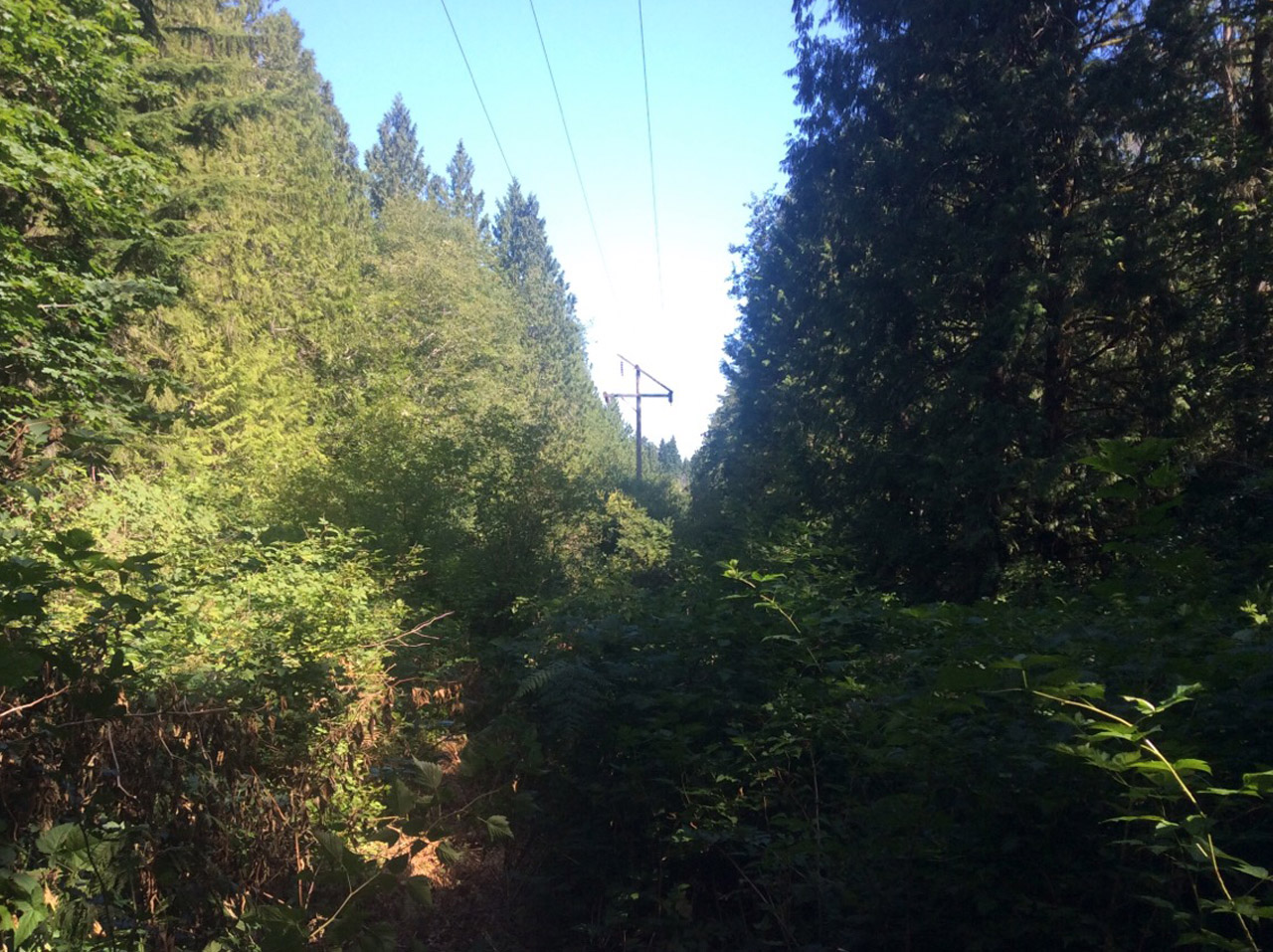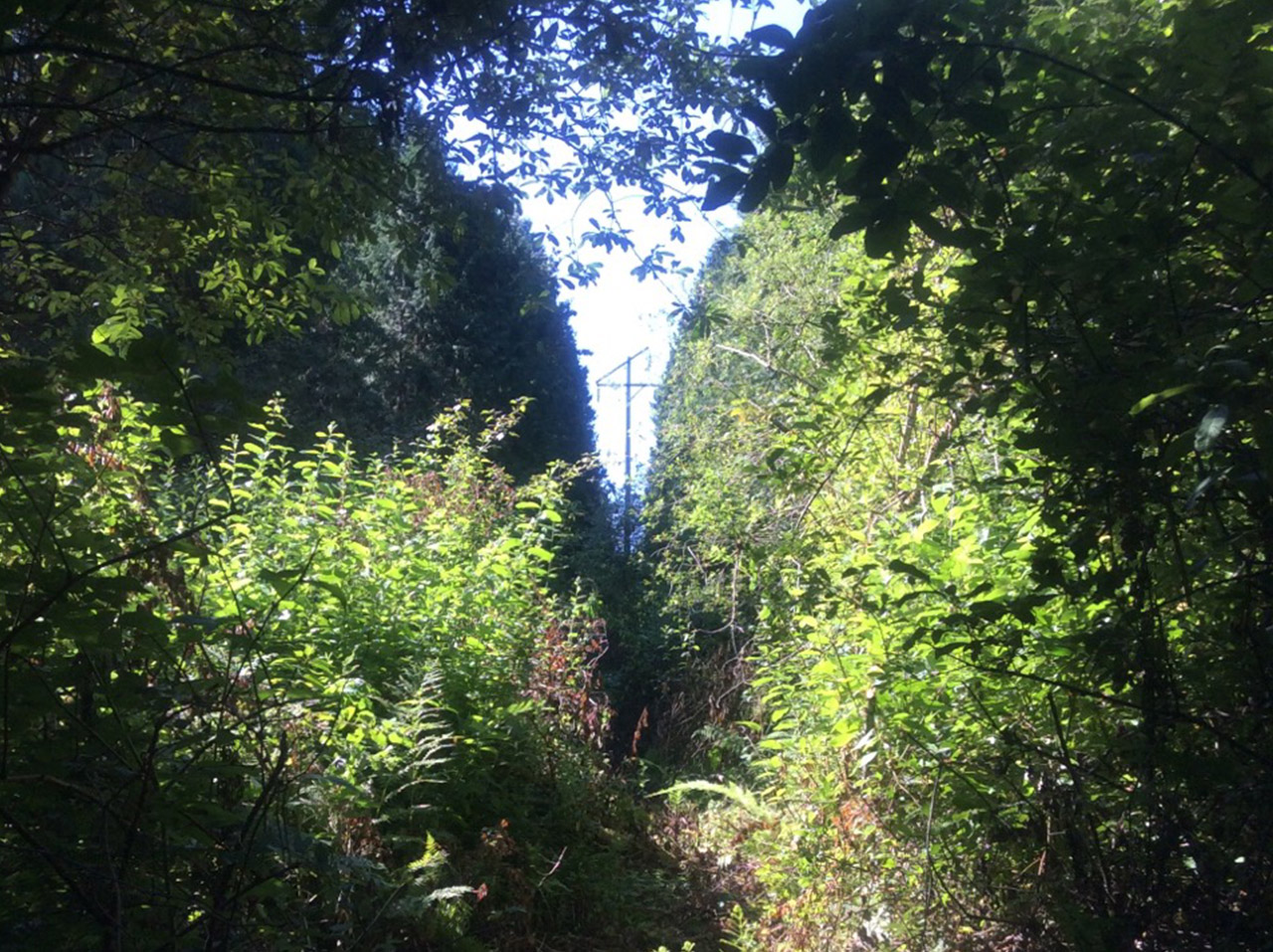Electricity on the Island
How power gets to you
Bainbridge Island’s electricity goes through a series of steps before it reaches you. Click through the slider to learn how!

Click image to expand
Bainbridge Island’s electric grid
Two high-voltage (115 kV) overhead transmission lines transport power across Agate Pass to Port Madison Substation. From Port Madison Substation, the Murden Cove Tap transports power to Murden Cove Substation, and the Winslow Tap transports power to Winslow Substation.
System facts
- 4 transmission lines
- 3 substations that serve approx. 14,500 customers
- 322 miles of distribution lines
- 186 miles are underground (58%)
- 24 miles are specially coated tree wire (7%)
Existing electric system challenges
In 2019, PSE completed a detailed assessment of Bainbridge Island’s electric system needs and identified the need for improved transmission reliability and increased capacity.
Bainbridge Island customers experience longer and more frequent outages in comparison to customers in Kitsap County and PSE company-wide due to:
Lack of redundancy
Nearly two-thirds of Bainbridge Island customers are at risk of a prolonged outage (as shown in the animation). This is because their area is served by a substation that’s fed by a single transmission line with no back-up. If the transmission line serving the substation goes out, then the substation and all customers served by that substation lose power.
Aging equipment
The Winslow Tap transmission line was built in the 1960s. Some of its poles and equipment are nearing the end of their life and need to be replaced.

Trees & difficult access
Bainbridge Island’s transmission lines are heavily exposed to trees. Trees cause most of the Island’s outages - when branches touch power lines or when trees fall into lines.
In particular, portions of the Winslow Tap transmission line are located in a heavily-vegetated corridor with difficult terrain and protected wetlands and streams, which makes it challenging to respond to outages compared to the other transmission lines on the Island.


Vegetation along the existing Winslow Tap transmission line corridor.
Solution: Improve reliability
Reliability means fewer power outages for customers – or outages that don’t last as long.
“Winter peak” refers to the time in which the highest amount of electricity is used during the winter. Bainbridge Island’s winter peak occurs in the morning and typically on the coldest days of the year due to the increased use of heating.
Electricity demand on Bainbridge Island is growing due to:
Population
Since the 1950s (when much of this electric infrastructure was built), the Island’s population has grown from just under 1,000 residents to nearly 25,000.
Increasing electrification
Electric vehicle and appliance use has been growing on Bainbridge Island. We’re increasingly relying on electricity to power our daily lives, especially during the coldest and hottest times of year.
Washington State Ferries is transitioning to a hybrid electric ferry system. This will require additional power for the Bainbridge Island ferry terminal.
Solution: Increase capacity
Capacity, put simply, is whether the electric system can meet power demand.